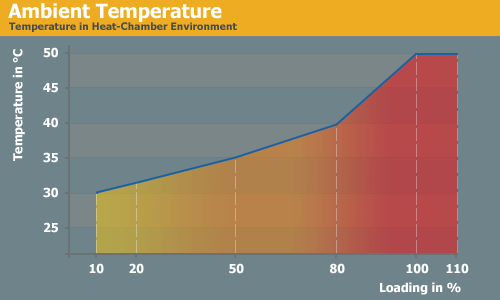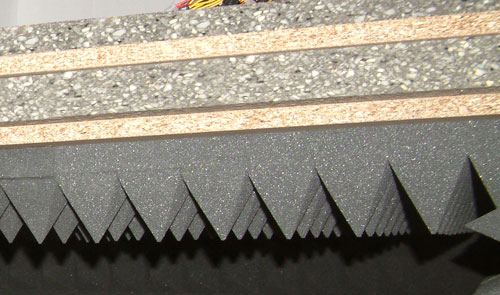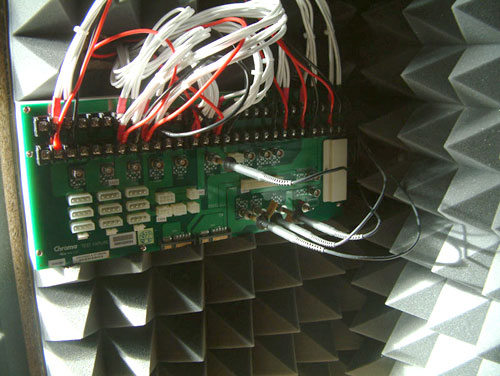Cooler Master Silent Pro PSUs
by Christoph Katzer on September 8, 2008 3:00 AM EST- Posted in
- Cases/Cooling/PSUs
Testing with the Chroma ATE Programmable Load

Our test equipment consists of two Chroma programmable DC Loads that enable us to test power supplies with an output of up to 1500W. The biggest advantage of the Chroma DC Loads is simply the high precision it provides. It can measure differences as small as 0.001V and 0.0001A, which will provide us with best-in-class results.
When programming the Chroma with specific amounts of load calculated according to the ATX norm, we are able to load power supplies to an exact percentage. We can now show results at every specific percentage needed. To get the best overview of a power supply, we load each unit with 10%, 20%, 50%, 80%, 100%, and 110% of the specified output. This is easy to calculate for a 1000W power supply: the 10% load is 100W and 110% load is 1100W. Remember that this is the amount of power the PSU delivers; due to inefficiencies, a power supply will actually draw more power from the wall.
Note: If you would like to know more about our testing methodology, equipment, and environment, please read our PSU testing overview.
We have added an additional 10% on the highest load to see how the units perform with overload. This test will be performed in all future reviews. The overload test is performed at room temperature as well as under more stressful conditions; to ensure we are not too cruel to the power supplies, we will keep the ambient temperature at 50°C in the stress test. Experience shows that many units can stand the overload at room temperature but will experience problems with higher temperature and overload together. Only the best-built units will survive this.

The Testing Environment
There is one flaw in testing power supplies with programmable loads while trying to measure the sound pressure levels at the same time. Because the programmable loads get very loud, there is no chance of hearing the power supply on the test stand. In order to make accurate measurements of the noise levels we needed a way to separate the test unit and the programmable loads. Our solution was to build a very thick box around the unit.

We concluded that a five-layer box with a total thickness of 6" (15cm) containing two layers of wood and three layers of special foam would suffice. It is designed as a box within a box. The inner box does not touch any part of the outer box, making it difficult for acoustic noise to pass through in the form of vibration. Each box is isolated on both sides with a layer of heavy foam that is normally used to insulate engines. On the inside we have an additional layer of 4" (10cm) thick pyramidal foam on every side of the box to eliminate the acoustic waves coming from the test object as well as we can.

To ensure a completely closed system we installed the printed circuit board that the connectors of the power supply are attached to inside the anechoic room/box. In other box designs, you would need to put all the cables through the wall. Unfortunately, that would result in the inside of the box not being fully isolated anymore. Our design keeps everything that needs to be connected inside of the box and maintains isolation.










15 Comments
View All Comments
Megaknight - Tuesday, September 9, 2008 - link
And once again the american consumer is screwed by stupid companies and the stupid US patent system...Amart - Monday, September 8, 2008 - link
The Ripple/Noise charts and a dedicated page for Quality are a good decision - thank you.OverDraught - Monday, September 8, 2008 - link
The product label does not show the UL mark, which has probably been applied for but not issued yet. No big deal unless you are in the USA and are building computers for resale or lease. If so, check with your product liability carrier before using this product.Personally, I would never by a PSU that was not UL listed.
JarredWalton - Monday, September 8, 2008 - link
As stated, the patent issues are keeping this out of the US for now, so the lack of a UL mark might have something to do with that. If/when that's resolved, then we can see if the UL is listed.Bozo Galora - Monday, September 8, 2008 - link
Well, I feel like I was just struck by lightning.Actual ripple graphs within an AT PSU review.
Beat me with a giant wet Ramen noodle.
(Anyone see pigs flying?)
semo - Monday, September 8, 2008 - link
"Cooler Master advertises their use of small copper plates on the heatsinks as a means of increasing heat dissipation, since copper transfers heat faster than aluminum. Aluminum still dissipates the heat faster to the surrounding air"so both aluminum and copper dissipate heat faster... compared to what?
also why isn't there any comarison to other psus. For example the sample reviewed here is more expansive than the CoolerMaster 520W Real Power Pro Modular but does it deserve the 50% mark up in price?
Christoph Katzer - Monday, September 8, 2008 - link
huh? yeah...Heat goes faster through copper than through aluminum. But aluminum can dissipate the heat faster into the air. This is why we have today mostly aluminum-coolers with a copper base which Cooler Master used for these power supplies now...
We do regular comparisons with the Buyer's Guide and sometimes in roundups.
For starters your mentioned unit comes from Acbel and is not even half as tough as an Enhance-build PSU like the Silentpro.
Howard - Monday, September 8, 2008 - link
I don't believe that aluminum dissipates heat faster than copper does. The reason why we have heatsinks that are a mix is probably because aluminum is much cheaper (and lighter, though that is probably a secondary rather than primary factor).bludragon - Monday, September 8, 2008 - link
I agree. I think we need mythbusters on this one. Cu has higher conductivity than Al. But, Cu is heavier, more expensive and harder to machine so we reach the compromise of Cu base and Al fins.PEJUman - Monday, September 8, 2008 - link
It's true Cu retains heat better than Al.Here are the simple clues:
Cu have higher conductivity and Specific heat than Al.
Conduction (CPU/Transistor to heatsink) needs good thermal conductivity.
Convection (Heat sink's fins to ambient air) needs a lot of surface area.
simple explaination:
While with higher conductivity, Cu will transport heat faster, but with the higher spec. heat Cu will stores more energy than Al (at the same shape and volume) while having the same surface area, thus Cu will be harder to dissipate convectively.
Now the long explaination:
Copper is a good candidate as first line 'heat sink', it will absorb a lot of energy before increasing 1 deg, meaning for a CPU at 47 deg and ambient at 27 deg, it will hold 27... 28... 29... 30 deg longer than Al as it heats up. - GOOD
now comes the drawback, with the high specific heat, when copper try to release heat to ambient air, it will maintain it's hot temperature longer than Aluminum simply because it has to dissipate more energy to ambient air before dropping 1 deg in temp.
So, let's imagine copper fins with the same shape and volume as Al, it will take a lot more air to cool the copper (not to mention it's heavier too) than the Al. - BAD
Thus the reason using Al for fins, and copper for heat block (sink).
asborbing heat from transistor or CPU got to do with small contact surface area, in which case higher thermal conductivity allows lower interface junction temp). while the Al fins dissipate heat more efficiently (in terms of heat flux/weight/size) than cooper.
Now, heat sink is just like any other overclocking quest, you're bound by the weakest link. Thus to come up with a good heatsink assembly you need to have properly sized Cu sink & Al fin.
This means sufficient surface area between the Al & Cu interface to sustain the same heat flux rate that the Cu is capable to aborb and Al fins capable to dissipate.
Mess this balance up, and your again bound by your weakest link, be it your copper block, Al fins of its Cu-Al interface area.